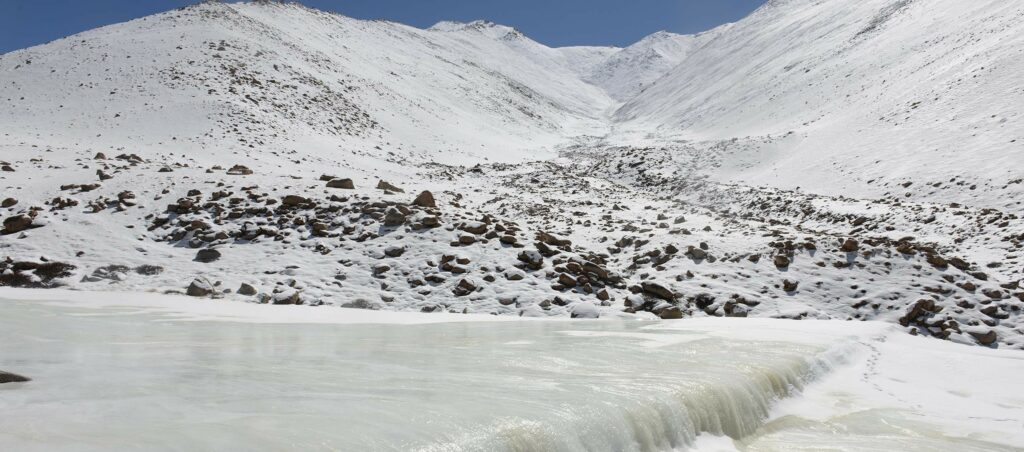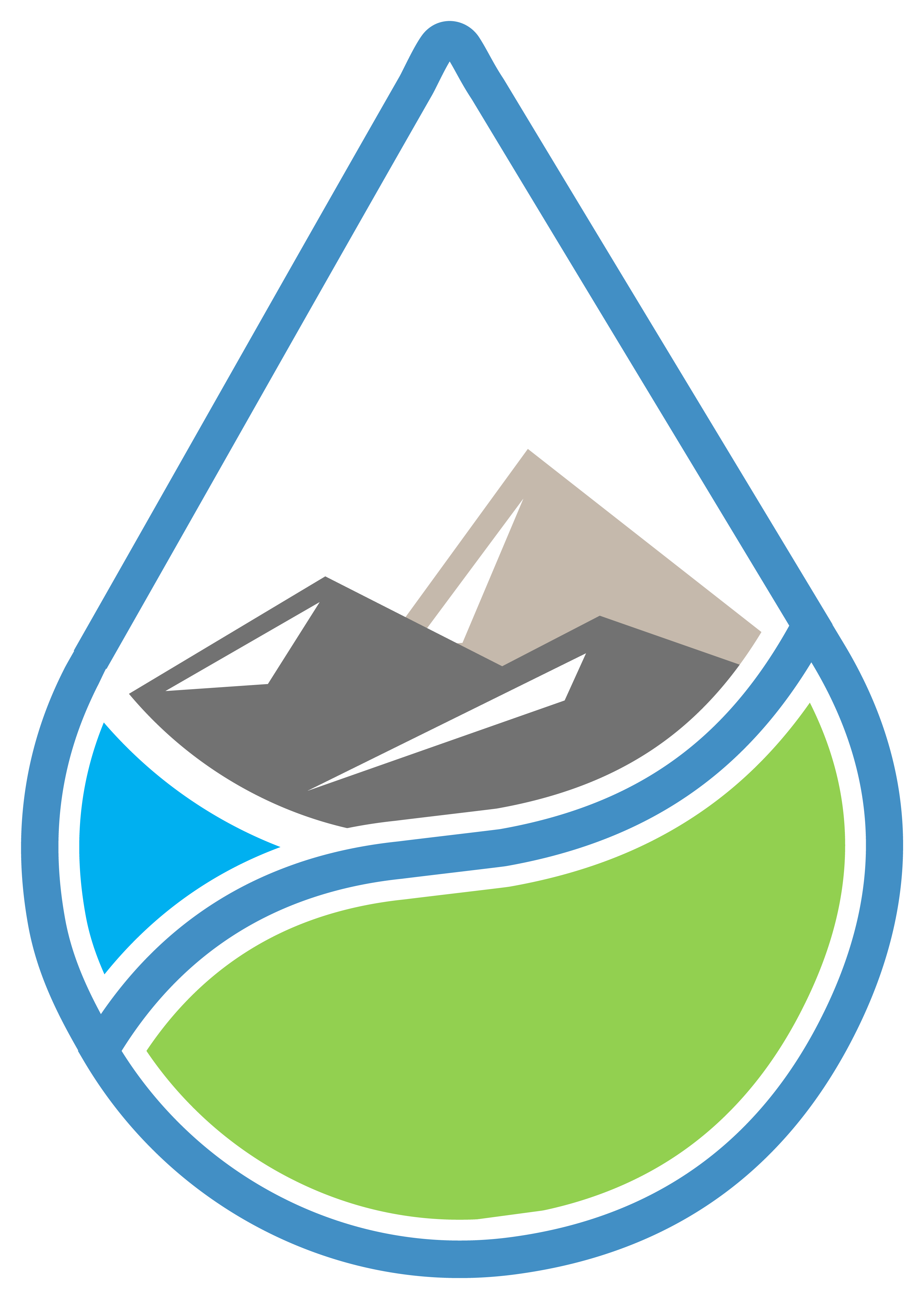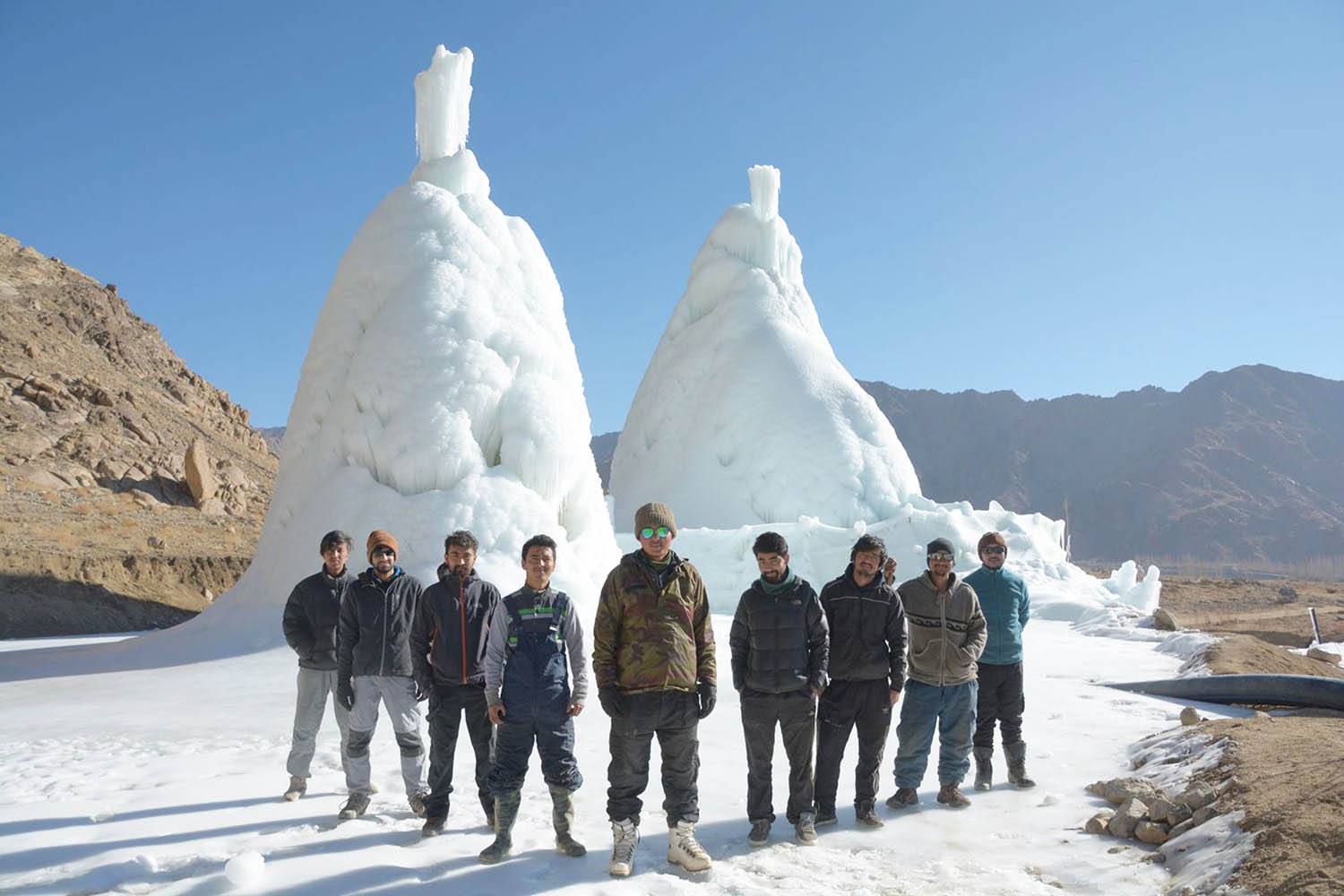Conquering Droughts Part 3: Artificial Glaciers 🧊🏔
All over the world, humans depend on meltwater in summer to sustain agriculture or ensure river transportation. For instance, the Rhine in central Europe consisted of 20% glacier meltwater during the extreme drought in 2003 [1]. Climate change diminishes meltwater quantities in summer. With warmer winters, less precipitation falls as snow and snowpack melts earlier. This leaves less water to melt during low precipitation seasons. The consequence: with the current warming trajectory, the Rhine is projected to have low water, insufficient for transportation, on over 45 days per year [2]. On the other side of the globe, in the Ladakh region, India, agriculture has become harder to sustain in summer, as meltwater, which used to be abundant, is missing in summer. The 3000 m high region has experienced severe glacier melt over the last 30 years. However, in recent years, engineers and scientists started growing the glaciers back.

Artificial glaciers store water in winter and release it in summer. Two techniques currently exist:
The smaller ice stupas, named after their resemblance to local Buddhist buildings, are ice towers produced by pumping and sprinkling liquid water in winter. This causes the water to rapidly cool and freeze, resulting in large ice masses. Ice-Stupas are placed in mountain shadows so their melting is delayed as far as possible into summer. The first prototype contained 150 m³ of ice and was 6 m tall [3]. Harnessing elevation differences, the glacier was created without electrical pumps, only harnessing gravity. While energy efficient, this technique is also extremely low cost; compared to building reservoirs, water supplied by ice stupas is 95% cheaper [4]

Another, larger scale option is to build small dams and funnel winter runoff through narrow channels. This causes the water to slow down and eventually freeze. The technique was invented by Chewang Norphel [5], retired engineer from the Ladakh region. So far, he build 14 of such glaciers, with the largest one being 21.000 m³. This glacier can supply a whole village of 700 people in the dry month. The result gives hope for climate change adaptation: two crops instead of one can be grown each year, even enabling exports [6].

In conclusion, artificial glaciers prove to be a practical climate adaptation solution, efficiently managing water resources and providing a reliable source for communities facing water scarcity. While this technique will probably not save one of Europes largest inland waterways, its definitely suitable to supply smaller alpine villages with meltwater longer into summer.
[1] https://www.chr-khr.org/de/nachrichten/gletscherschwund-neue-studie-zum-schmelzwasser-im-rhein
[3] https://thewire.in/environment/wangchuk-rolex-stupa-secmol
[4] https://www.indiawaterportal.org/articles/ice-stupas-water-conservation-land-buddha


Comments are closed